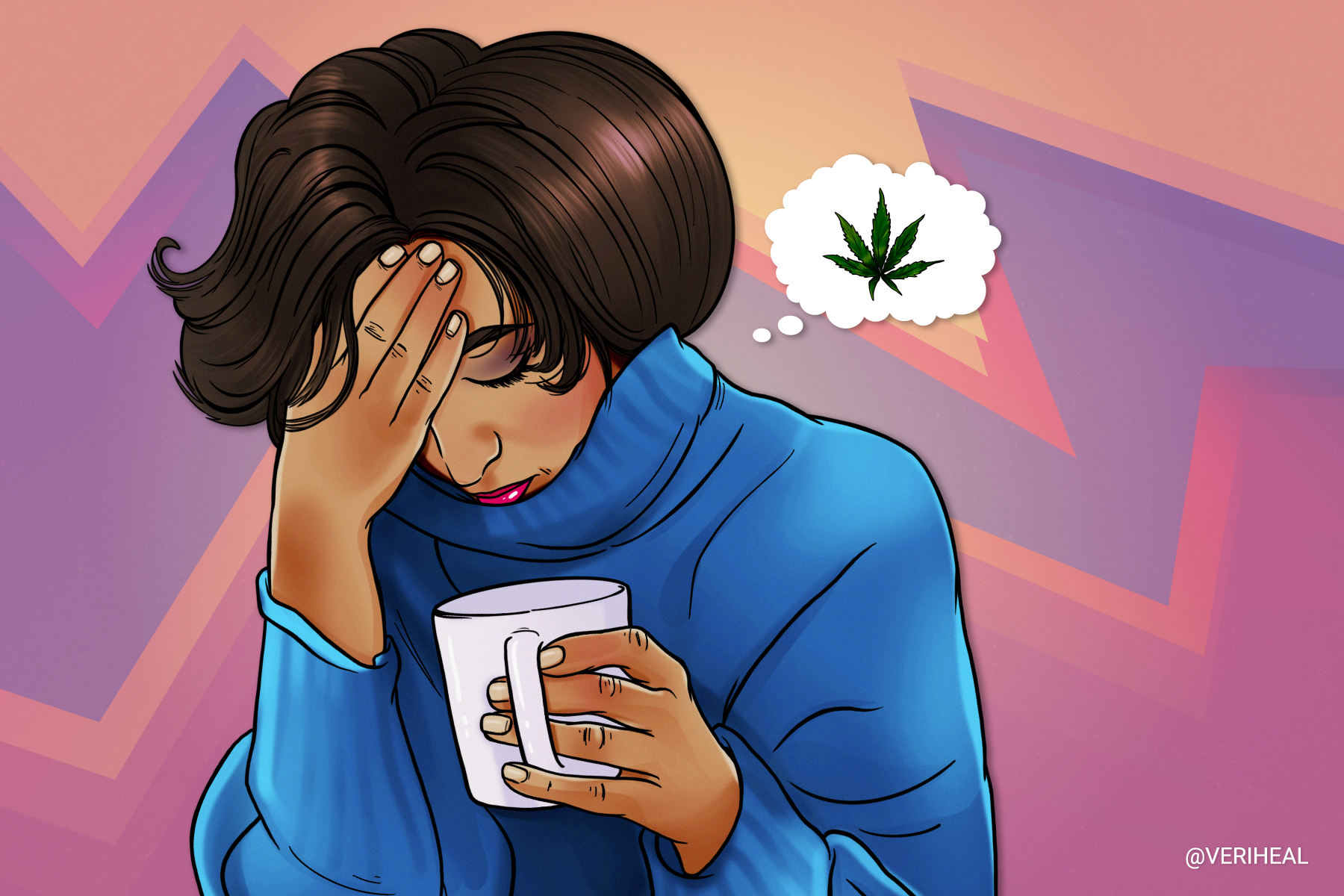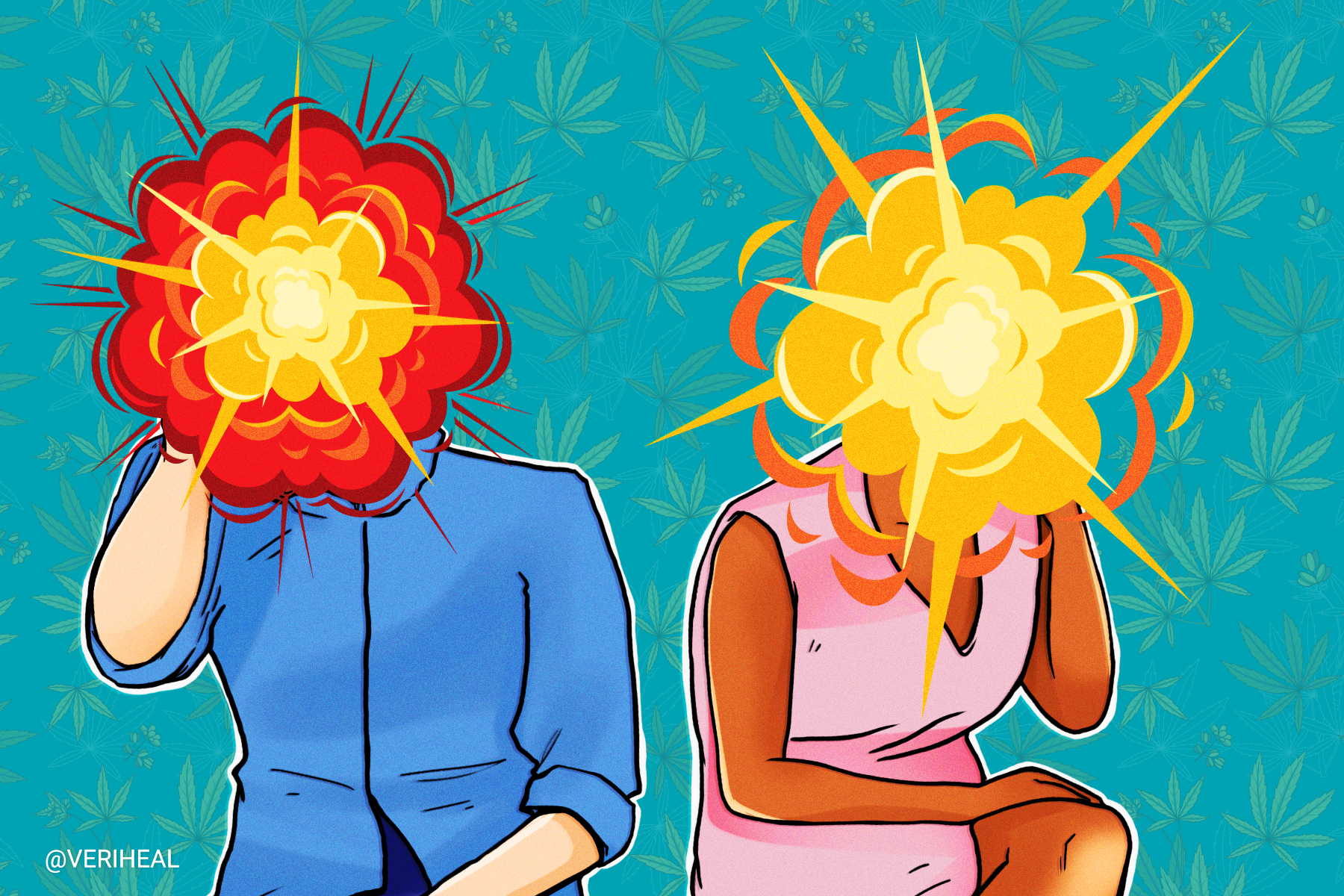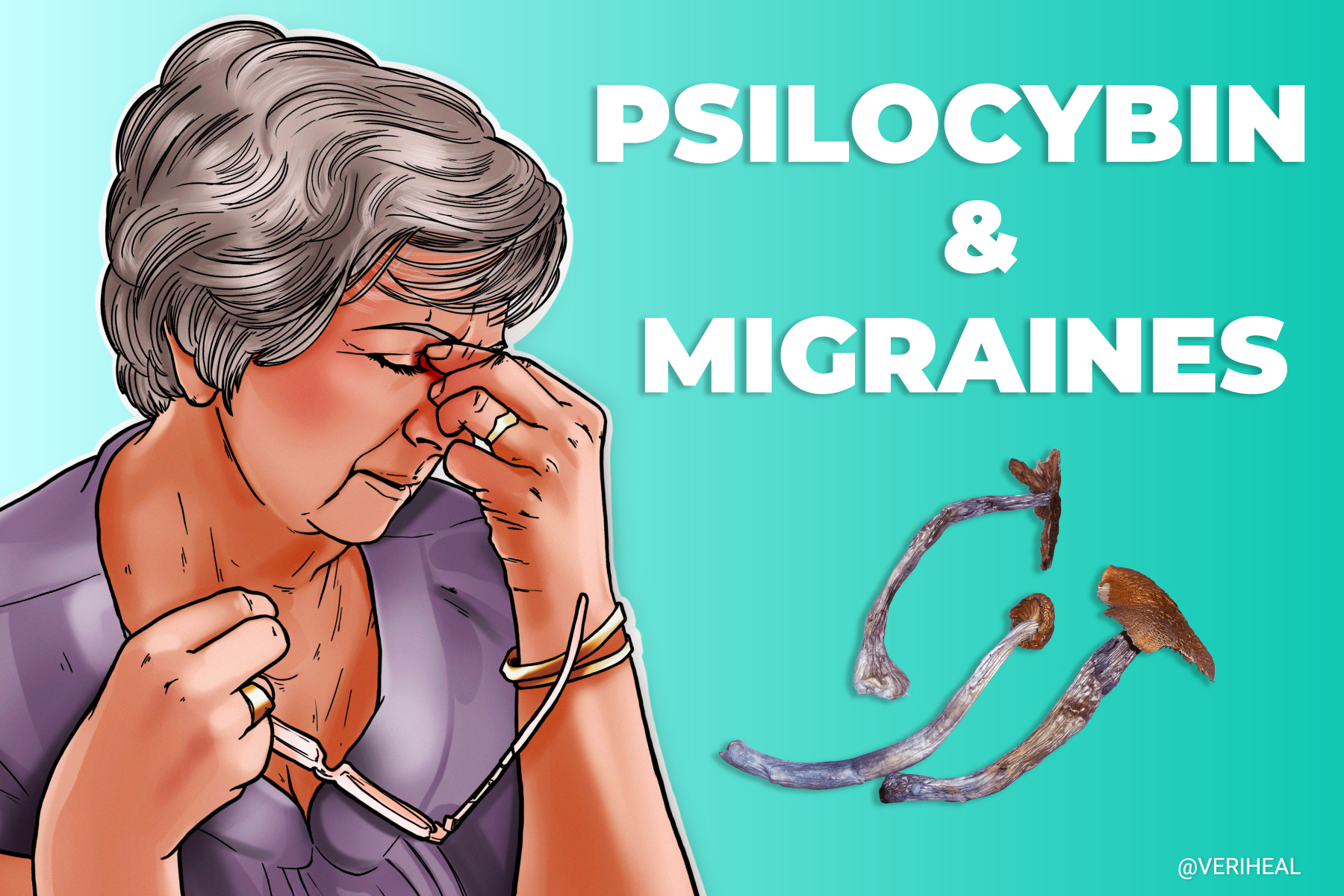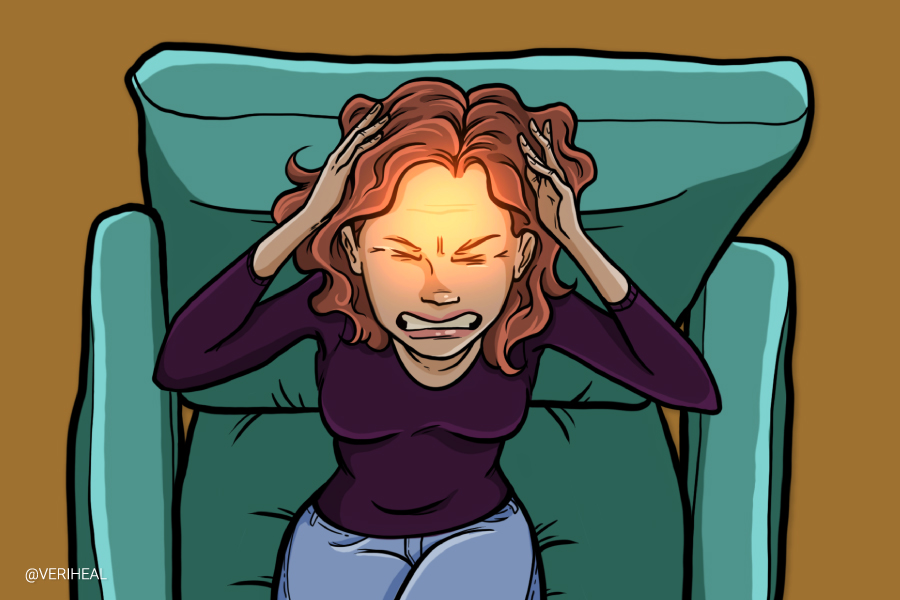Migraines and Medical Cannabis Treatment
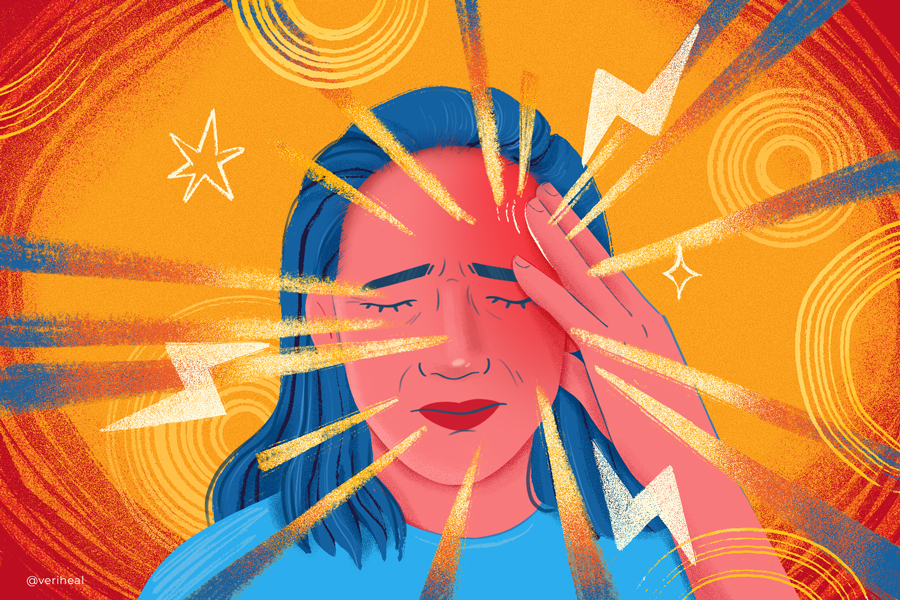
- Risk Factors of Migraines
- Migraines Causes and Treatments
- Medical Cannabis for Migraines
- Migraine Stages and Symptoms
According to The Migraine Institute, “35 million Americans suffer from migraine headaches, and 43% of women and 18% of men will experience migraines at some point in their lives.” The condition, most common between the ages of 18 to 44, is treated in various ways, including medical cannabis, which may work effectively for some people (13). According to the latest research, cannabis users often report less headache pain and frequency when using medical cannabis for chronic migraine
WebMD details precisely why medical cannabis may help treat migraines:
“Inside your brain and other parts of your body, you have a network of cannabinoid receptors. These are tiny loops of protein that affect how you feel pain. Marijuana has natural compounds called cannabinoids. When you use it, these cannabinoids go into your body and look for the receptors. They change how the receptors work, and they can calm down pain signals (2).”
The effects of medical marijuana are being studied and the current findings suggest that medical cannabis may prove to offer alternative treatment options to the adult population for migraines among other conditions.
Risk Factors of Migraines
Some factors that may make you more prone to migraines include:
- Family history
- Age
- Biological sex (sex assigned at birth)—Women are significantly more likely than men to have migraines
- Hormonal changes
Migraines Causes and Treatments
WebMD reports up to more than a dozen causes of a migraine: gene, age, gender, nerve signals and brain chemicals, hormonal changes, emotional stress, certain foods, skipping meals, alcohol, caffeine, sensory overload, changes in sleeping pattern, physical strain, and too much medication (2). According to the Mayo Clinic, migraine triggers can include:
- Hormonal changes in women
- Drinks
- Stress
- Sensory stimuli
- Sleep changes
- Physical factors
- Weather changes
- Medications
- Foods (8)
Due to so many causes, treatment for migraines varies accordingly. Foods change blood sugar levels that can cause migraines, but so can anxiety from emotional stress. The Mayo Clinic reports the most common treatments are pharmaceutical options. These include migraine medications such as pain-relieving and preventive medicines, from NSAIDs to opioid medications and even Botox injections. Though, notably, opioids are the last resort method for migraine pain management and are not really prescribed for this anymore due to the highly addictive nature of the drug (7). Typically, migraine medications focus on prevention and daily or monthly adherence to several established options including beta-blockers, injections, or anti-seizure medications.
Medical Cannabis for Migraines
Cannabis works in the body through the endocannabinoid system (ECS) which is a large cell signaling network found throughout the body and the central nervous system that is responsible for a variety of different functions including appetite, mood, memory, motor responses, and many more.
The Association of Migraine Disorders reports one patient’s significant story about how medical cannabis eased their migraine condition. They tell the personal story of Michelle Tracy, aka the Migraine Warrior. After trying all other treatments, Tracy found herself driving two hours to Boston to see Dr. Brian McGeeney, who suggested that medical cannabis may be the answer. It was. After researching three strain classifications of cannabis, Indica, Sativa, and Hybrid, Dr. McGeeney suggested “two different strains: one Indica and one Hybrid that was low in THC and high in CBD (16).”
Her story mattered so much that Boston doctors told it to legislators. “At least two of my doctors voted to legalize marijuana recreationally in our state based on my explanation of how it had worked in my life and my anxieties around using a drug that was still federally illegal,” Tracy writes. “In voting to legalize marijuana at a state level, we believed that perhaps we might come closer to federal legalization or at the very least decriminalization.”
This anecdotal evidence is promising and provides hope to many that live with chronic migraine in their daily life. However, due to restrictive federal laws, there is still a lack of large-scale, randomized, and double-blinded clinical trials available to confirm these informal findings.
However, a 2019 study led by Carrie Cuttler, a Washington State University assistant professor of psychology, had positive findings regarding cannabis and migraines. By analyzing self-reported symptom data from almost 2,000 patients, the researchers found that cannabis use reduced the severity of headaches and migraines by nearly 50% (4).
A recent study published in 2021 found that “Patients utilizing medical cannabis for migraine have reported improvement in migraine profile and common comorbidities. Reduction in prescription medication is also common, especially opioids. Side effects exist, with the majority being mild (9).” They observed that THC and CBD appear to be responsible for these therapeutic effects.
A 2021 review of the current literature regarding medical marijuana cannabis, headaches, and migraines found that, “Some patients experienced a prolonged and persistent improvement in their health and well-being (both physically and mentally) after long-term use of medicinal cannabis. Overall, patients reported more positive effects rather than adverse effects with medical cannabis use. Chronic pain and mental health are the two reasons where medical cannabis is used often (12).” The review concluded that there were both short-term and long-term benefits reported that are worth researching more substantially.
Medical Marijuana for Chronic Pain
Individuals who endure migraines frequently often look to pain relievers to help them weather the symptoms of chronic migraines in their daily lives. However, taking painkillers repeatedly can cause serious consequences such as “medication-overuse headaches (5).” This risk is especially prevalent when a patient takes aspirin or ibuprofen for more than 14 days a month.
Medication-overuse headaches happen when medications stop offering symptom relief and begin to cause headaches. Individuals then attempt to increase the use of painkillers which perpetuates this cycle. Such medications also have secondary effects on blood thinning (aspirin) or gut lining (ibuprofen) as well as compromising organ function (ibuprofen, acetaminophen) that may cause further issues if taken in excess or long-term.
Medical marijuana has been studied for its analgesic properties. It’s possible that the medical use of cannabis may offer pain relief to those living with headache disorders like migraine without resorting to overusing NSAIDs or opioids that have negative side effects and pose the risk of dependency or organ harm (14).
Medical Marijuana for Depression
People living with depression are more likely to experience migraines than those without depression. It is also true that individuals that have migraines are more likely to experience depression than the general population.
Treatment of migraine and treatment of depression is therefore often done in conjunction with one another. Therefore it is worth noting the preliminary research into the antidepressant effects of cannabis and how medical cannabis is being studied as a possible treatment option to combat depression (15).
A 2020 study concluded that, “The findings suggest that, at least in the short term, the vast majority of patients that use cannabis experience antidepressant effects, although the magnitude of the effect and extent of side effect experiences vary with chemotypic properties of the plant.”
The “chemotypic properties” of the plant refer to the cannabinoid and terpene profile of the cannabis strain used. While there is often a heavy emphasis on whether a strain is a sativa or an indica. However, this is of lesser importance than the terpene and cannabinoid profile of the strain. For example, cannabidiol (CBD) is well known for its anxiolytic (anxiety-reducing) effects whereas delta-9 tetrahydrocannabinol (THC) may actually induce anxiety in a consumer. Many terpenes have also been studied to have antidepressant-like effects even on their own, such as pinene, limonene, linalool, beta-caryophyllene, and terpineol.
Medicinal cannabis may help migraine sufferers find relief from pain as well as depression although stronger research is needed into this specific population in order to understand the benefits and risks more in detail.
Medical Marijuana for Nausea and Vomiting
During the migraine attack, migraine patients may experience nausea and vomiting as a side effect. There is considerable evidence that cannabis has anti-emetic (preventing vomiting) effects, and that manipulating the ECS can help regulate nausea and vomiting in humans and animals (11).
The anti-emetic effects of medical cannabis have been studied in relation to other medical conditions such as HIV/AIDS. The research available suggests that cannabis has therapeutic benefits that help alleviate nausea and vomiting in these populations. However, more research is needed to confirm these findings among patients with migraine that experience nausea and vomiting as a result of migraine attacks.
Migraine Stages and Symptoms
Migraines are considered to be the sixth most disabling illness in the world, according to the Migraine Research Foundation. During attacks, more than 90% of those affected are unable to function normally or work until it subsides. In many cases, migraines are accompanied by other neurological symptoms, as well as tingling, dizziness, vomiting, and extreme sensitivity to sound, light, and movement. On average, the pain itself and the associated symptoms last anywhere from 4 hours to 3 days (10).
Migraines progress through 4 stages: prodrome, aura, attack, and post-drome. During each of these stages, an individual may experience a wide range of symptoms.
Prodrome
This stage occurs around 1-2 days before the migraine. According to the Mayo Clinic It is characterized by the following symptoms:
- Constipation
- Mood changes, from depression to euphoria
- Food cravings
- Neck stiffness
- Increased urination
- Fluid retention
- Frequent yawning
The American Migraine Foundation suggests, “practicing mindfulness meditation, relaxation therapy, or other biobehavioral techniques, can even prevent headache in some cases (1).”
Aura
This stage occurs either before or during the migraine’s onset. It will vary depending on the individual. Usually, each of the symptoms listed below occurs slowly and builds up over time, lasting up to 60 minutes. Examples of migraine aura may include:
- Visual phenomena, such as seeing various shapes, bright spots or flashes of light
- Vision loss
- Pins and needles sensations in an arm or leg
- Weakness or numbness in the face or one side of the body
- Difficulty speaking
Attack
The migraine itself can last anywhere from 4 to 72 hours. The length of time an individual experiences migraine will vary from person to person as well as migraine frequency.
Symptoms experience during a migraine attack may include:
- Pain on one or both sides of the head
- Throbbing or pulsing sensation accompanying pain
- Sensitivity to light, sound, and sometimes smell and touch
- Nausea and vomiting (8)
Post-drome
This stage refers to the period of time following the migraine. This stage is characterized by feeling drained, confused or exhausted. Although some people report feelings of elation following the migraine attack.
The therapeutic effects of medical cannabis may provide relief for those suffering from chronic migraine or other headache disorders. A growing body of research supports the claim that medical cannabis has analgesic, anti-emetic, anti-inflammatory, and antidepressive effects that could improve the quality of life of patients.
It’s important to note that not all cannabis products are created equal and they come in many different forms (concentrates, flower, edibles, etc.). If you are considering medical cannabis as a treatment for migraines consult with your doctor or a licensed medical marijuana physician to help you make informed choices about what kinds of cannabis products are right for you.
Note: The content on this page is for informational purposes only and is not intended to be professional medical advice. Do not attempt to self-diagnose or prescribe treatment based on the information provided. Always consult a physician before making any decision on the treatment of a medical condition.
1. American Migraine Foundation. (2022, April 12). The timeline of a migraine attack. The Timeline of a Migraine. Retrieved June 27, 2022, from https://americanmigrainefoundation.org/resource-library/timeline-migraine-attack/
2. Bernstein, S. (2021, December 21). Medical marijuana for migraines: Can cannabis or CBD help? WebMD. Retrieved June 27, 2022, from https://www.webmd.com/migraines-headaches/under-counter-treatment-migraines
3. Bhargava. (2020). Migraine causes: Triggers and risk factors. WebMD. Retrieved June 27, 2022, from https://www.webmd.com/migraines-headaches/migraines-causes
4. Cuttler, C., Spradlin, A., Cleveland, M. J., & Craft, R. M. (2020). Short- and long-term effects of cannabis on headache and Migraine. The Journal of Pain, 21(5-6), 722–730. https://www.jpain.org/article/S1526-5900(19)30848-X/fulltext
5. Fischer MA, Jan A. Medication-overuse Headache. [Updated 2022 May 1]. In: StatPearls [Internet]. Treasure Island (FL): StatPearls Publishing; 2022 Jan-. Available from: https://www.ncbi.nlm.nih.gov/books/NBK538150/
6. Li, X., Diviant, J. P., Stith, S. S., Brockelman, F., Keeling, K., Hall, B., & Vigil, J. M. (2020). The Effectiveness of Cannabis Flower for Immediate Relief from Symptoms of Depression. The Yale journal of biology and medicine, 93(2), 251–264. https://pubmed.ncbi.nlm.nih.gov/32607086/
7. Mayo Foundation for Medical Education and Research. (2021, July 2). Migraine. Mayo Clinic. Retrieved June 27, 2022, from https://www.mayoclinic.org/diseases-conditions/migraine-headache/diagnosis-treatment/drc-20360207
8. Mayo Foundation for Medical Education and Research. (2021, July 2). Migraine. Mayo Clinic. Retrieved June 27, 2022, from https://www.mayoclinic.org/diseases-conditions/migraine-headache/symptoms-causes/syc-20360201#:~:text=A%20migraine%20is%20a%20headache,sensitivity%20to%20light%20and%20sound.
9. Mechtler, L. L., Gengo, F. M., & Bargnes, V. H. (2021). Cannabis and migraine: It’s complicated. Current Pain and Headache Reports, 25(3). https://link.springer.com/article/10.1007/s11916-020-00931-2
10. NY Neurologists. (n.d.). A third of eligible migraine patients were not offered preventive therapy. Neurologists. Retrieved June 27, 2022, from https://www.nyneurologists.com/blog/a-third-of-eligible-migraine-patients-were-not-offered-preventive-therapy#:~:text=Migraine%20is%20the%206th,to%20the%20Migraine%20Research%20Foundation
11. Parker, L. A., Rock, E. M., & Limebeer, C. L. (2011). Regulation of nausea and vomiting by cannabinoids. British Journal of Pharmacology, 163(7), 1411–1422. https://www.ncbi.nlm.nih.gov/pmc/articles/PMC3165951/
12. Poudel, S., Quinonez, J., Choudhari, J., Au, Z. T., Paesani, S., Thiess, A. K., Ruxmohan, S., Hosameddin, M., Ferrer, G. F., & Michel, J. (2021). Medical cannabis, headaches, and migraines: A review of the current literature. Cureus. https://www.ncbi.nlm.nih.gov/pmc/articles/PMC8459575/
13. Prevalence of Migraines . THE MIGRAINE INSTITUTE. (2020, January 17). Retrieved June 27, 2022, from https://www.themigraineinstitute.com/migraine-overview/prevalence-of-migraines/
14. Russo, E. (2008). Cannabinoids in the management of difficult to treat pain. Therapeutics and Clinical Risk Management, Volume 4, 245–259. https://www.ncbi.nlm.nih.gov/pmc/articles/PMC2503660/
15. Stanciu, C. N., Brunette, M. F., Teja, N., & Budney, A. J. (2021). Evidence for use of cannabinoids in mood disorders, anxiety disorders, and PTSD: A systematic review. Psychiatric Services, 72(4), 429–436. https://pubmed.ncbi.nlm.nih.gov/33530732/
16. Tracy, M. (2019, April 5). Medical marijuana and migraine – is it for you? Association of Migraine Disorders. Retrieved June 27, 2022, from https://www.migrainedisorders.org/medical-marijuana-and-migraine/



